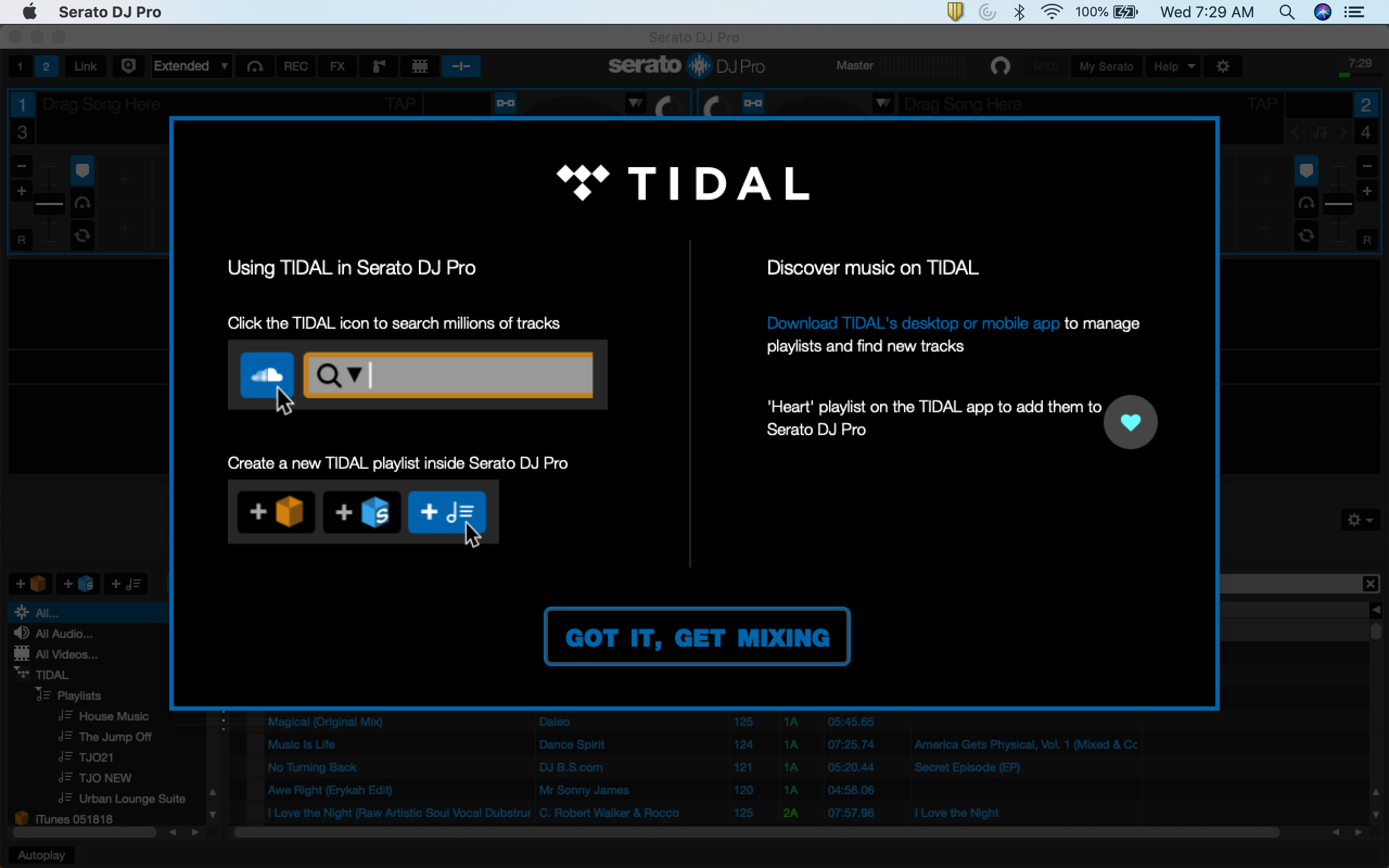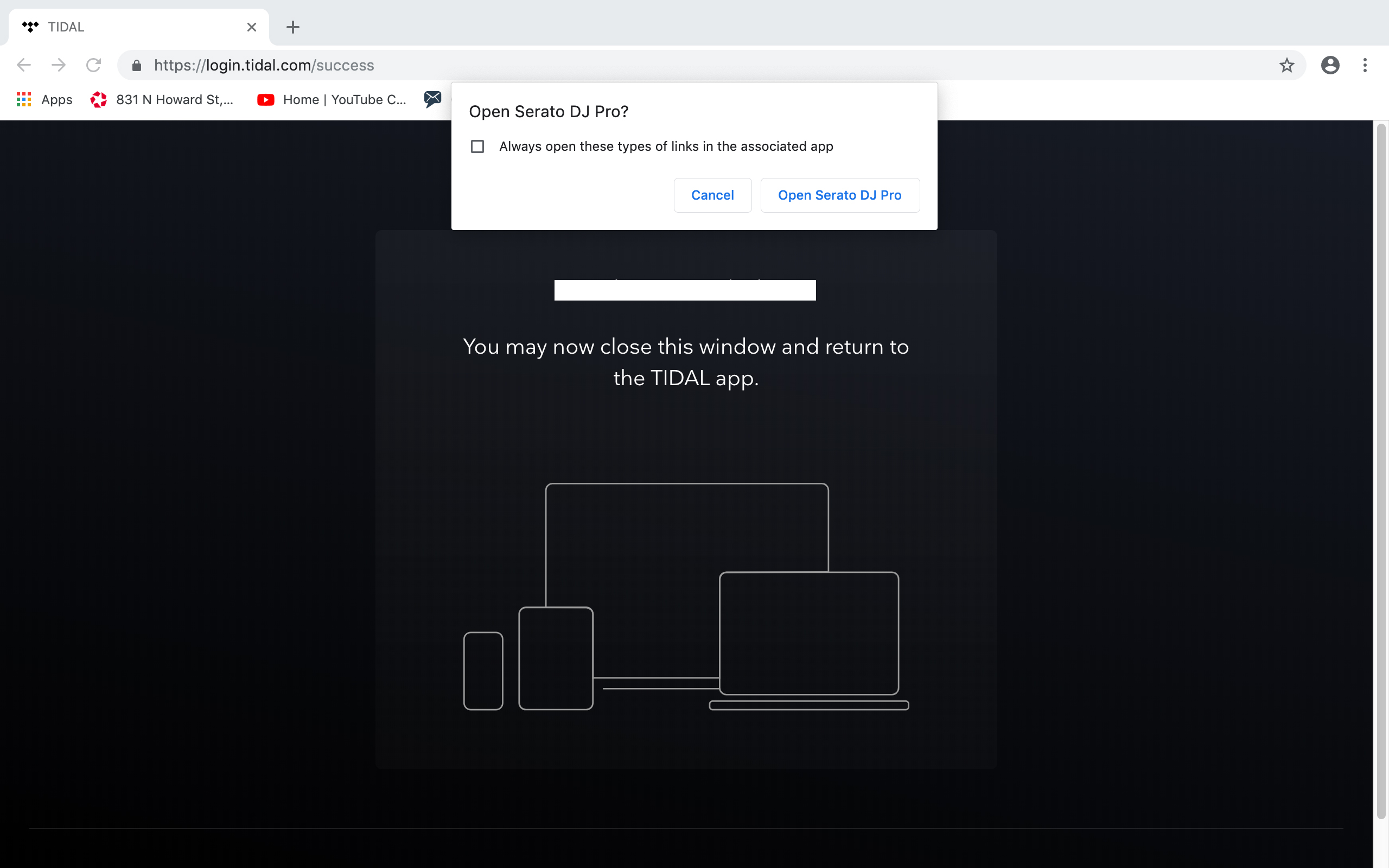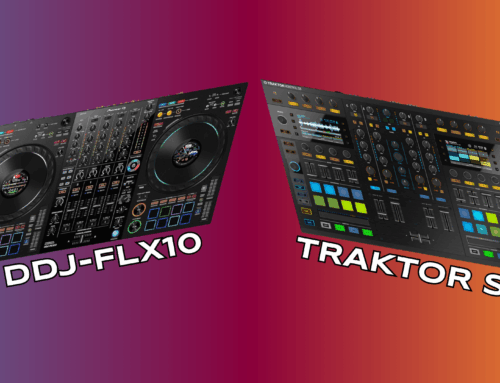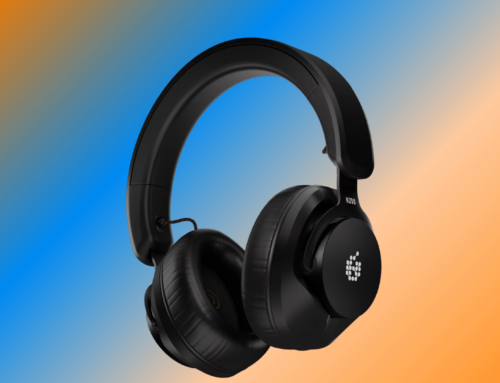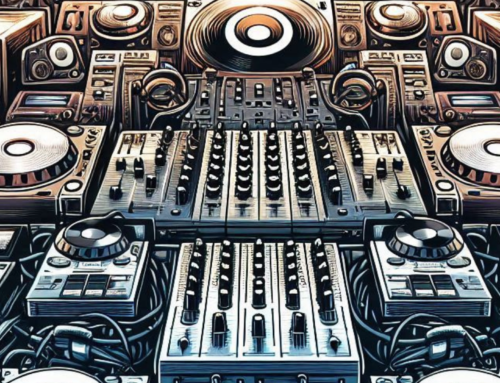Remember when Pulselocker just got up one day and shut down its service. That was back in November of 2017. Serato, RekordBox and Virtual DJ users were FUCKED! Beatport later purchased Pulselocker and will inevitably launch a similar service, let’s call it “Beatport LINK” LOL. I did use the Pulselocker service with RekordBox…it was just ok. Beatport doesn’t have the catalog like a true streaming service, such as Tidal, Spotify or Apple Music, so it’s going to be very interesting to see what “Beatport LINK” is all about and how its UI/UX will interact with other DJ software.
Full circle and we now have other players jumping into the void left by Pulselocker. Enter Tidal & Soundcloud Streaming integration with Serato DJ Pro (ONLY). Sorry Rekordbox and Virtual DJ users, you don’t have a streaming service integration…yet. Let me start by dismissing SoundCloud as a true streaming service. Not to mention its ultra, extra compression it does to your music during uploads. However, I’ve been using the Tidal Streaming integration with Serato DJ Pro for a little over a month. I’ll get to my final conclusion later, but here are my thoughts about this service and how it may work for you.
First and foremost, if you’re a Hip Hop DJ, you’ll love this service. Tidal has just about everything when it comes to Hip Hop. I found everything Pete Rock (one of my favorite producers) has released on Tidal. But you’ll also run into remixes. Some are curated others are just ridiculous and how is the artist getting paid from these rogue remixes. But as much of a Hip Hop fan I am, when I’m DJing, it’s Deep House, Deep Minimal (yes, that’s a thing) Lounge/Chillout and Afro-Brazilian, that’s my pocket.
So let’s get into how this service works and my experience. It’s actually very straight forward. In order to use Tidal Streaming with Serato, you’ll need a WiFi connection. Once you are connected to your wifi, launch your Serato software, now open your Serato settings, go to the Library & Display tab and select Tidal as the streaming service. You’ll be asked to log into Tidal from your default web browser. Once this is done, you are now ready to start using Tidal Streaming with Serato.
Within Serato, you can see all of your Tidal playlist you’ve created. You can even create new playlists in Serato, which will propagate over to Tidal and vice versa. There is a lag when creating a new playlist in Serato or in Tidal when the services are connected. However, if you relaunch Serato or Tidal, the new playlist will appear. This little bug can probably be fixed with a software update from Serato. When the Tidal icon is activated (blue is active), you’ll have the ability to search the entire Tidal database, everything. You like Jazz, not a problem, Hip Hop, we got Hip Hop and yes, Tidal does have a pretty good select of Dance Music. A general rule of thumb is if its available on Apple Music or Spotify, it’s available on Tidal, so keep that in mind.
Now I’m trying to wrap my head around the sound quality or lack thereof. Maybe the not so great sound quality is due to my subscription type, which is premium for now. Not sure if the HiFi subscription will make a difference, but I do have a way around. An interesting quirk is no recording. I mean that’s pretty obvious, right. You don’t own the music, you did not purchase the music, you are streaming the music, so why would you think you can record your set, but I have a way around that as well. Just connect an audio interface to your mixer or controller and voila, you can record your set. And remember I mentioned the sound quality, well recording through an audio interface creates a better sound quality. You’ll need to boost your gain on your interface, but it works and it works really well.
Another interesting quirk is no Batch Analyze. What does that mean, well if you were just using Serato on its own, you can select multiple tracks and analyze them, receiving the BPM and Key. However, with Tidal & Serato, you can only analyze one track at a time but loading said track into a deck. Not sure why Batch Analyze is deactivated, but I can live with that. But other then those three quirks, I’m actually really feeling this integration.
As DJ’s, we purchase a lot of music. Remember when vinyl was king and you would receive your monthly record pool delivery. Out of 50 records, maybe 20 worked for you, right. But today with Tidal & Serato, you can listen first, maybe record a set to hear how your selection is playing nice with each other. The point is you now have time to conceptualize your creativity without having to purchase a shit load of tracks first. That’s pretty major for me. Add some tracks to a playlist and create the vibe you’re looking for, see what works, throw out what doesn’t work. Now you can purchase tracks you know you’ll use.
In conclusion, would I use Tidal & Serato IRL (in real life), no? If I have to depend on a rock solid wifi connection at a club, bar, lounge, etc. to make this happen, I’ll pass. But in my home studio, this is awesome. So be careful about what to expect if you take this on the road. Always have some backup, laptop or thumb drive and let’s hope that an Apple Music or Spotify will come soon to a Rekordbox near you. Overall, I’m going to continue using Tidal Streaming & Serato, it’s an awesome match made in heaven. And this is coming from a person who switched from Serato to Rekordbox eight months ago. Rekordbox and still my primary DJ software, but now I can start my creative process with Tidal Streaming & Serato and finish it on Rekordbox.
